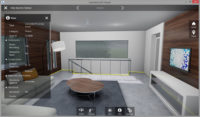“Intelligent machines should collaborate with people, not compete with them,” says Greg Lynn, a pioneer of digital design and fabrication techniques in architecture.
He’s talking about the motivation behind Gita, a 22-pound semi-autonomous, two-wheeled vehicle that can carry 40 pounds of cargo at speeds of up to 26 miles per hour. It is the first product from Piaggio Fast Forward (PFF), an eighteen-month-old division of Piaggio Group, the parent company of small two-, three- and four-wheeled vehicle brands, such as Vespa and Moto Guzzi.
Lynn, PFF’s chief creative officer, is working with a group of designers, engineers, and roboticists from various backgrounds, including architecture and urban design, to rethink urban transportation options. Gita represents what PFF calls “granular mobility,” or vehicles that operate as companions to human-powered movement.
A prototype for Gita was unveiled earlier this month at a press event in Boston, where PFF is headquartered. With its circular profile, filleted corners and candy-coated exterior, the device looks like a cross between a Vespa Sprint and R2D2. The effect is intentional. “You can think about it as a kind of pet,” says Jeffrey Schnapp, PFF’s CEO and the founder of Harvard University’s metaLAB.
The battery-powered Gita, which can operate for eight hours of continuous use on a single three-hour charge, is designed to go where humans go: along paths, on ramps, into buildings and up elevators. It can “navigate any ADA-compliant space,” according to Schnapp. A transmitter belt enables the device to follow its owner at a specified distance. In addition, Gita can work in concert with other Gita vehicles to create a convoy for larger payloads. Its creators are also developing the capability for Gita to work independently, so that it can perform tasks like picking up dinner or dropping off the dry-cleaning on its own.
Lynn suggests that in the near future, American cities may look more like Hanoi or Mumbai, where the lines between vehicular and pedestrian paths are blurred. It is within this context that small and agile companion vehicles like Gita, which can operate on roadways, sidewalks, and inside buildings, offer an alternative to traditional motorized vehicles as well as to self-driving cars and trucks.
Over the next few months, PFF will further develop Gita and its larger sibling, Kilo. It will test the vehicles in real-world conditions before offering them for sale to businesses and consumers. Pricing has not yet been announced.
The vehicle can navigate any ADA-compliant space.
Video courtesy Piaggio Fasst Forward




